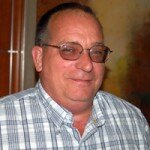
Contact: Alison Sampson
(513) 558-4559
[email protected]
For the third year, University of Cincinnati Medical Center has received the American Heart Association/American Stroke Association’s Get With The Guidelines®-Stroke Gold Quality Achievement Award with Target: StrokeSM Honor Roll Elite. The award recognizes the hospital’s commitment and success ensuring that stroke patients receive the most appropriate treatment according to nationally recognized, research-based guidelines based on the latest scientific evidence.
To receive the Gold Quality Achievement award, hospitals must achieve 85 percent or higher adherence to all Get With The Guidelines-Stroke achievement indicators for two or more consecutive 12-month periods.
To qualify for the Target: Stroke Honor Roll Elite, hospitals must meet quality measures developed to reduce the time between the patient’s arrival at the hospital and treatment with the clot-buster tissue plasminogen activator, or tPA, the only drug approved by the U.S. Food and Drug Administration to treat ischemic stroke. If given intravenously in the first three hours after the start of stroke symptoms, tPA has been shown to significantly reduce the effects of stroke and lessen the chance of permanent disability. UC Medical Center earned the award by meeting specific quality achievement measures for the diagnosis and treatment of stroke patients at a set level for a designated period.
These quality measures are designed to help hospital teams follow the most up-to-date, evidence-based guidelines with the goal of speeding recovery and reducing death and disability for stroke patients.
According to the American Heart Association/American Stroke Association, stroke is the No. 5 cause of death and a leading cause of adult disability in the United States. On average, someone in the U.S. suffers a stroke every 40 seconds, someone dies of a stroke every four minutes, and nearly 800,000 people suffer a new or recurrent stroke each year.
UC Medical Center has also met specific scientific guidelines as a Comprehensive Stroke Center, featuring a comprehensive system for rapid diagnosis and treatment of stroke patients admitted to the emergency department.
“This award is especially meaningful because it recognizes the incredibly talented and diverse team of health care providers at the hospital,” said Dawn Kleindorfer, MD, co-director of the UC Comprehensive Stroke Center, a professor of neurology and associate dean for faculty development and women’s initiatives at the UC College of Medicine. “These certifications are intentionally challenging and involve team members from nursing, therapy, speech, dietary, social work, and physicians from neurology, emergency medicine, neurosurgery and neuro-intensive care, among others. We are proud to provide such a high level of care for stroke patients from our community.”
“The American Heart Association and American Stroke Association recognize UC Medical Center for its commitment to stroke care,” said Paul Heidenreich, MD, national chairman of the Get With The Guidelines Steering Committee and professor of medicine at Stanford University. “Research has shown there are benefits to patients who are treated at hospitals that have adopted the Get With The Guidelines program.”



 In treating a stroke, time is brain. Because treatment must be administered within 3 to 4 ½ hours to be eff ective, one of the first things a doctor or EMT must do is determine the moment when the stroke...
In treating a stroke, time is brain. Because treatment must be administered within 3 to 4 ½ hours to be eff ective, one of the first things a doctor or EMT must do is determine the moment when the stroke...



